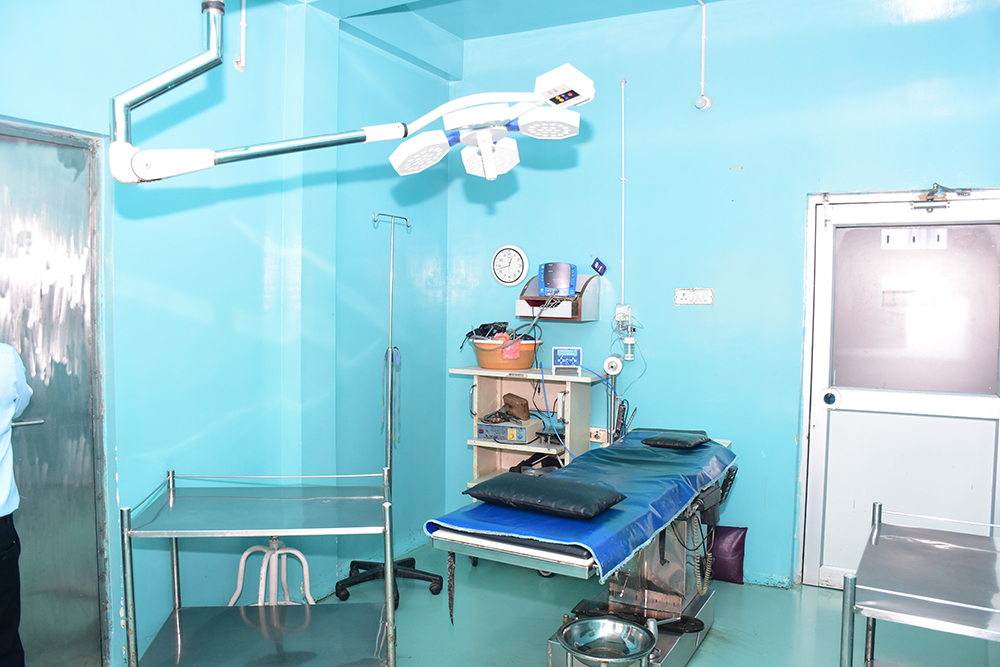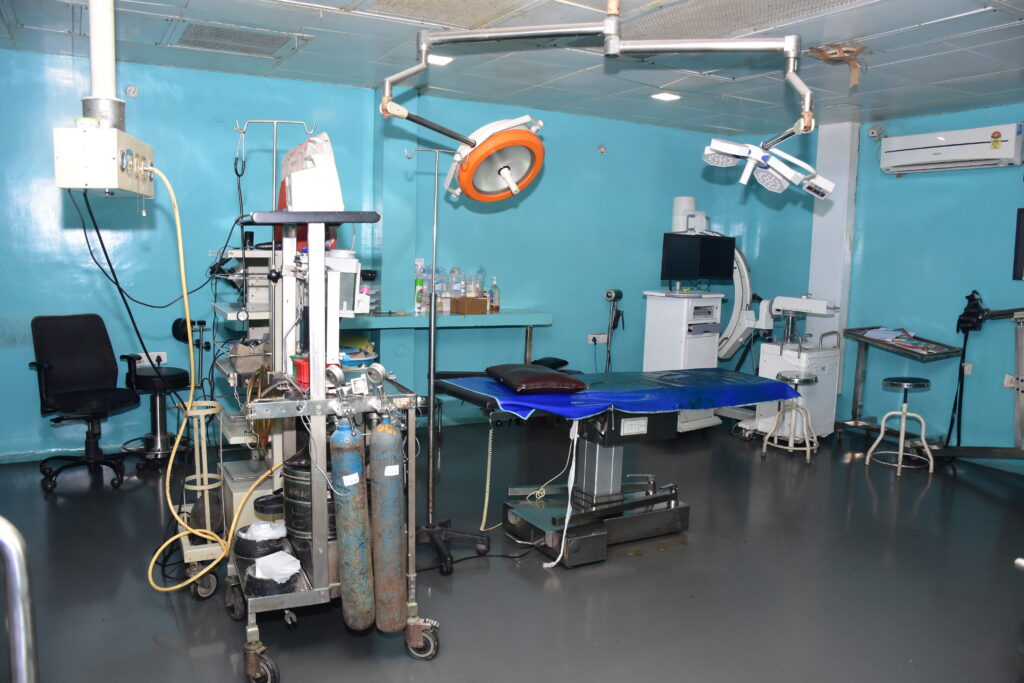Laminar Flow O.T.

Laminar Flow O.T.
Total Knee Replacement Surgery
A Laminar Flow Operating Theatre (OT) is a specialized surgical environment designed to maintain a highly sterile atmosphere through the use of laminar airflow systems. These systems are critical in reducing the risk of infection during surgical procedures, especially those requiring a high degree of sterility, such as orthopedic, cardiovascular, and transplant surgeries.
Key Features of Laminar Flow OT
Laminar Airflow System:
- Unidirectional Flow: Laminar airflow involves a continuous, unidirectional flow of filtered air at a uniform velocity. This minimizes air turbulence and reduces the potential for airborne contaminants.
- High-Efficiency Particulate Air (HEPA) Filters: These filters are essential for removing particles, bacteria, and other pathogens from the air. HEPA filters can trap particles as small as 0.3 microns with an efficiency of 99.97%.
- Positive Pressure: The operating theatre is maintained at a higher pressure compared to surrounding areas, ensuring that any air movement is outward, preventing contaminated air from entering the sterile environment.
Air Changes Per Hour (ACH):
- Frequent Air Exchange: The system typically provides 20-300 air changes per hour, significantly higher than in standard operating rooms. This frequent air exchange ensures continuous removal of contaminants and maintenance of a clean environment.
- Frequent Air Exchange: The system typically provides 20-300 air changes per hour, significantly higher than in standard operating rooms. This frequent air exchange ensures continuous removal of contaminants and maintenance of a clean environment.
Sterile Environment:
- Sterilized Surfaces: All surfaces in the laminar flow OT are designed to be easily cleanable and resistant to microbial growth. Regular and thorough sterilization protocols are followed.
- Minimal Equipment: Only essential equipment is present within the operating field to reduce potential contamination sources.
- Sterilized Surfaces: All surfaces in the laminar flow OT are designed to be easily cleanable and resistant to microbial growth. Regular and thorough sterilization protocols are followed.
Temperature and Humidity Control:
- Optimal Conditions: The temperature and humidity levels are meticulously controlled to create an optimal environment for both patient safety and surgical team comfort.
Benefits of Laminar Flow OT
- Reduced Infection Risk: The primary benefit is the significant reduction in postoperative infection rates due to the highly controlled and sterile environment.
- Improved Surgical Outcomes: A sterile environment leads to fewer complications, promoting better patient outcomes and faster recovery times.
- Enhanced Air Quality: Consistent and high-quality air filtration improves overall air quality, providing a safer environment for both patients and surgical staff.
Applications
- Orthopedic Surgeries: Critical for joint replacements and other procedures where infection risk must be minimized.
- Cardiovascular Surgeries: Ensures a sterile environment for delicate heart surgeries.
- Transplant Surgeries: Vital for organ transplants where any infection could be life-threatening.
Conclusion
Laminar flow operating theatres represent a significant advancement in surgical environments, prioritizing patient safety through stringent control of air quality and environmental conditions. By significantly reducing the risk of infection, these OTs ensure better surgical outcomes and higher standards of patient care.



Our associate TPA
Akriti Clinic offers seamless TPA facilities, ensuring hassle-free insurance claim processing. Patients benefit from efficient and streamlined services, making their healthcare experience more convenient.






